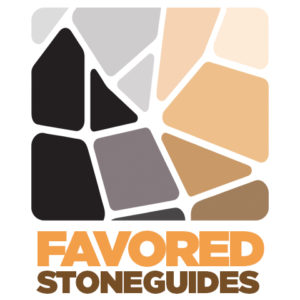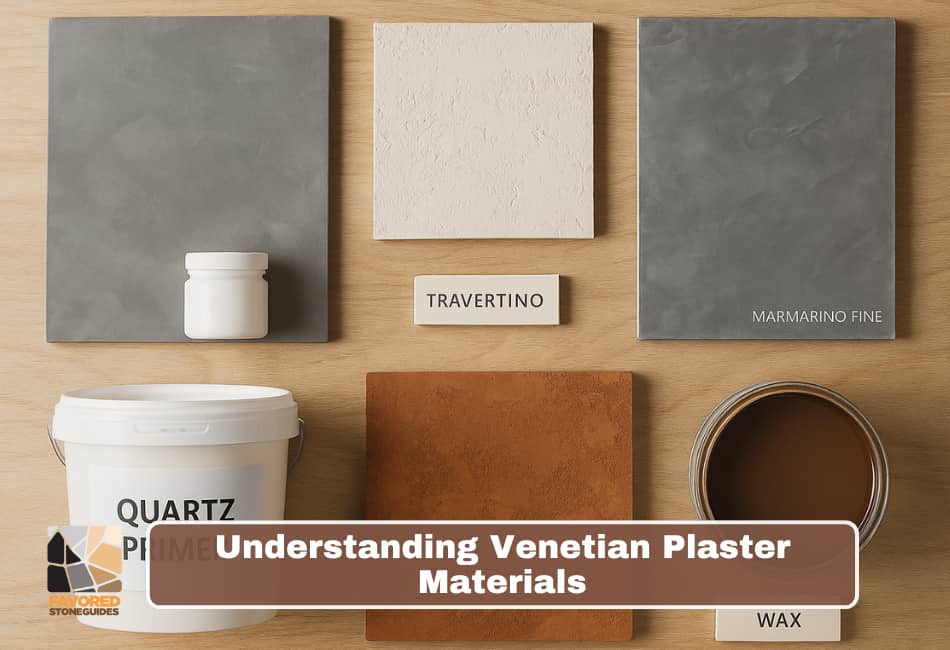If you’ve ever admired the depth, texture, and elegance of Venetian plaster, you’ve probably wondered what makes each finish unique. The answer lies in the materials themselves.
Every type of Venetian plaster has its own formula, combining lime, marble powders, and pigments to create different looks, strengths, and properties.
Whether you’re an aspiring artisan or simply curious, understanding these materials is essential to mastering this craft.
Here’s a detailed breakdown of the key materials you’ll encounter in Venetian plastering—and how to use them.
Why Material Composition Matters
Venetian plasters aren’t all created equal. Their lime content, ink content, marble powder ratio, and other additives are carefully balanced to achieve:
- Different levels of shine and gloss
- Varied surface textures
- Water resistance and durability
- Versatility for different spaces
By knowing what goes into each material, you can confidently select the right plaster for each project.
1. Marmarino Medium: Smooth, Satin, and Versatile
Let’s start with Marmarino Medium, one of the most commonly used Venetian plasters.
- Finish: Marmarino Medium creates a smooth, satin-like finish with subtle depth and light play. The level of shine depends on how much you burnish (polish) the surface.
- Composition: It’s made from natural lime and finely ground marble powder.
- Characteristics: Marmarino Medium is known for its hardness and durability, even in humid environments.
- Where to use: This plaster is a popular choice for elegant spaces like offices, reception areas, villas, and other upscale interiors.
- Customization: You can tint Marmarino Medium with coloring inks to achieve a wide range of colors.
- Bonus: It’s also capable of textured finishes—something you’ll learn in more advanced applications.
In summary, Marmarino Medium offers a balance of elegance and strength, making it a reliable option for both decorative and practical applications.
1. Marmarino Fine: Glossy, Elegant, and Full of Depth
Next up is Marmarino Fine, the go-to plaster for achieving a high-gloss, mirror-like finish.
- Finish: Marmarino Fine produces a very shiny, glossy surface with a soft texture and deep visual layers. It’s excellent at reflecting light, giving walls a luminous, luxurious feel.
- Composition: Like Marmarino Medium, it’s made from natural lime and ground marble.
- Characteristics: Marmarino Fine is durable and resistant to moisture, making it suitable for bathrooms and wet areas (with proper sealing).
- Where to use: It’s often found in sophisticated interiors—offices, reception areas, luxury homes, and bathrooms as a marble or ceramic alternative.
- Customization: Like its medium counterpart, it can be tinted with coloring systems for personalized colors.
If you want a sleek, polished finish with a luxurious sheen, Marmarino Fine delivers stunning results.
3. Travertino: The Rustic, Textured Alternative
For a more rustic, natural feel, Travertino is the material of choice.
- Inspiration: Travertino was designed to replicate travertine marble, a classic Italian stone admired since ancient Rome.
- Finish: It produces a rough, stone-like texture but feels smooth to the touch. Its natural shadows and textures evoke the timeless beauty of Roman architecture.
- Color: The material is supplied white but can be tinted using the same coloring system as Marmarino products.
- Popular techniques: One of the most requested finishes with Travertino is the “dragged” effect, achieved using a special Regato tool.
- Where to use: Perfect for feature walls, rustic interiors, or earthy, textured statement.
Travertino adds a bold, tactile dimension to spaces that celebrate texture and history.
4. Quartz Primer: Preparing Surfaces
Before applying Venetian plaster, surface preparation is crucial. That’s where Quartz Primer comes in.
- Purpose: It acts as an adhesive base layer for lime-based plasters.
- Composition: This acrylic primer is enhanced with quartz sand to provide grip for plasters.
- When to use: Quartz primer is recommended for smooth, non-porous surfaces like drywall, plaster, gypsum, old marble, or wood.
- Application: One coat is typically sufficient to prepare the surface for plaster application.
Although a standard acrylic primer can be used in some cases, Quartz Primer is strongly advised for achieving the best adhesion, especially on slick surfaces.
5. Waxes and Sealers: Protecting Your Finish
Once your Venetian plaster is applied and burnished, it’s time to seal it. There are different waxes and sealers depending on the final look and function:
- Natural Beeswax: Ideal for most interior applications, adding a soft sheen and mild protection.
- Decorative Waxes: These can add effects like pearlescent, bronze, gold, or other metallic hues for extra flair.
- Paraffin Wax or PU Sealer: Recommended for areas exposed to water or humidity, such as bathroom splash zones or behind baths.
The right wax or sealer not only enhances the aesthetic but also extends the plaster’s lifespan.
Practical Advice for Artisans
If you’re new to Venetian plastering or planning to pitch your services to clients, here are a few important tips:
- Take notes on every material: Build your own descriptions so you can confidently explain each material’s benefits to clients.
- Test your materials: Try different techniques on sample boards to understand how each plaster behaves.
- Know your product properties: Clients will appreciate your ability to recommend the right material for their space.
- Stay flexible: Venetian plastering is as much about adaptability as it is about technique.
Understanding your materials will set you apart as a knowledgeable, trustworthy artisan.
Final Thoughts
Every Venetian plaster project begins with choosing the right material. Whether you want the smooth elegance of Marmarino Medium, the high-gloss depth of Marmarino Fine, or the rugged beauty of Travertino, understanding these materials empowers you to deliver bespoke, high-quality finishes.
As you experiment, test, and apply these plasters, you’ll gain confidence not just in your technique—but in your ability to educate, guide, and inspire clients.
Mastering Venetian plaster starts with mastering your materials. And once you do, the creative possibilities are endless.

